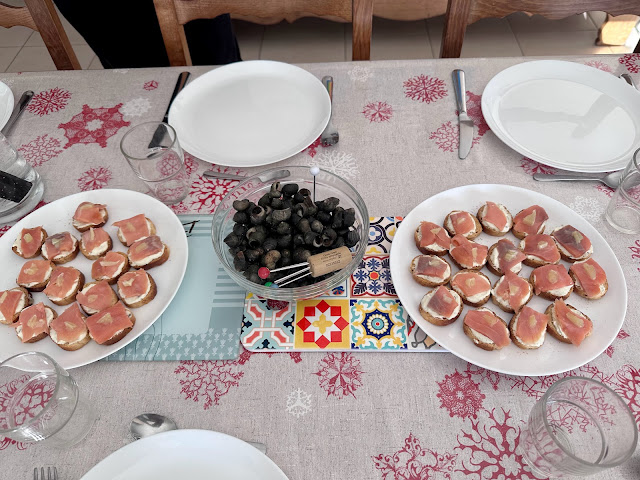In 1991, Serge Renaud, a scientist from the University of Bordeaux, coined the term the FRENCH PARADOX, after noting the relatively lower rate of cardiovascular diseases among the French compared to UK or USA where they fiercely believed that Fat is the culprit and every thing was made FAT FREE.
My advice to you is simple .. Do not believe the marketing masters when they say
LOW
FREE
HIGH
NO, NON, NONE
Low as in LOW CALORIE , meaning they have added CHEMICALS to your food
FREE as in FAT FREE, meaning a whole heap of sugar is added.
HIGH as in HIGH FRUCTOSE CORN SYRUP which is totally a chemical causes damage to the health of humans
NON etc meaning substituting the current FEAR of an INGREDIENT but substituting it with another chemical which is far worse (to be proven in the future)
I am in France currently and enjoying the food immensely. When people ask me, how have you managed to be healthy in the USA, I tell them, I do not live in the USA, come to visit the Indians and leave as soon as I can .. thus avoiding the poisons to which I am exposed to, in its multitudes of forms. I am grateful to the Indians of USA who have been an immense gift to me.
The current crises in individual health in the USA UK Australia would be greatly ameliorated if they improved their NUTRITION.
French eat 6x more butter than the Americans, four times the cheese and lots of red wine ..
here are some of the foods i have eaten in this past 24 hours ..
oysters from the bay of QuiberonScallops sourced locally. Leek from the market
This traditional dessert called Christmas Tree Trunk is made at the bakery in the village
Oysters are so plentiful that I have them with every meal
I love the tase of the bigorneaux from the bay, periwinkle in English
Look at the size of the adolescents meal, it is not heaped up with carbohydrates or french fries dipped in ketchup
We are in France, and there is always champagne when friends are visiting. I was told that fifty years ago, champagne was reserved for the upper class in the society, now it has become more egalitarian.
These are the sweets we ate today. I am not saying all the French eat like this all the time, but I have noticed that :
1. most of the food are prepared at home or sourced locally. There is no Uber Eats or Food delivery service in this town
2. the portion sizes for adults and children are s,a;; and very rarely there are "seconds"
3. there is conversation around the table but it seemed to be a pleasant exchange and also people catching up on the news of each other
4. The lunches last usually about two hours if people are visiting and less if it is just family. there does not seem to be this "rush" to finish or overloading the stomach.
I am happy to be here. I give nutritional advice in my professional capacity around the world. Most people are not willing to change their habits or not able to change their habits because of lack of availability or ability to access nutritional food because of their social status or geography. Of a 100 people that I speak about Nutrition, I can honestly say that 3-5 might change or attempt to change their way of eating.
The countries in my circuit at the moment is
United States where most of my counselling is done, CUBA (nutritional counselling here is an oxymoron..but I do eat well in Cuba thanks to my Cuban sister who accesses food locally), Colombia, Cambodia, Malaysia, Kerala..
One has a better chance of eating well when visiting a developing country than a developed one, for various reasons.
In his 2003 book, The Fat Fallacy: The French Diet Secrets to Permanent Weight Loss, Will Clower suggests the French paradox may be narrowed down to a few key factors, namely:
- Good fats versus bad fats — French people get up to 80% of their fat intake from dairy and vegetable sources, including whole milk, cheeses, and whole milk yogurt.
- Higher quantities of fish (at least three times a week).
- Smaller portions, eaten more slowly and divided among courses that let the body begin to digest food already consumed before more food is added.
- Lower sugar intake — American low-fat and no-fat foods often contain high concentrations of sugar. French diets avoid these products preferring full-fat versions without added sugar.
- Low incidence of snacks between meals.
- Avoidance of common American food items, such as soda, deep-fried foods, snack foods, and especially prepared foods which can typically make up a large percentage of the foods found in American grocery stores.
People who eat more dairy fat — which is plentiful in whole milk, yogurt, and cheese — may be less likely to develop heart disease than people who eat smaller amounts of dairy, a new study suggests.
For the study, researchers measured blood levels of a fatty acid found mostly in dairy foods in 4,150 60-year‑olds in Sweden, a county known for its love of dairy-based foods. After an average follow-up of 16.6 years, they found that people with the highest levels of the fatty acid had the lowest risk of cardiovascular disease. The study authors confirmed these findings after combining the Swedish results with similar data from the United States, Denmark, and the United Kingdom. The study was published in the Sept. 21, 2021, issue of PLOS Medicine.
While the findings don’t prove that dairy fat protects against cardiovascular problems, it suggests that full-fat dairy products may be less harmful to heart health than experts have assumed.(Harvard Health)





















